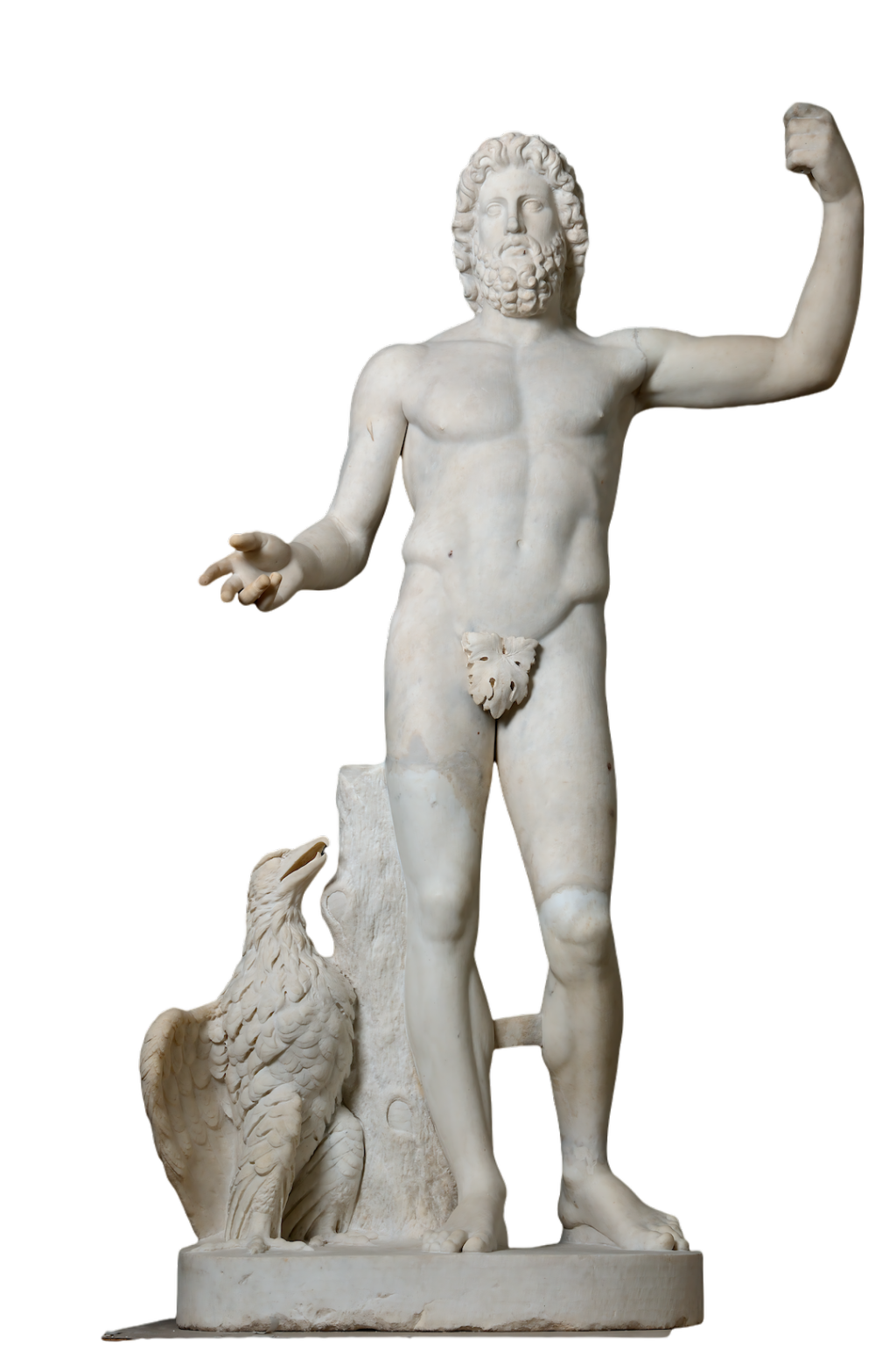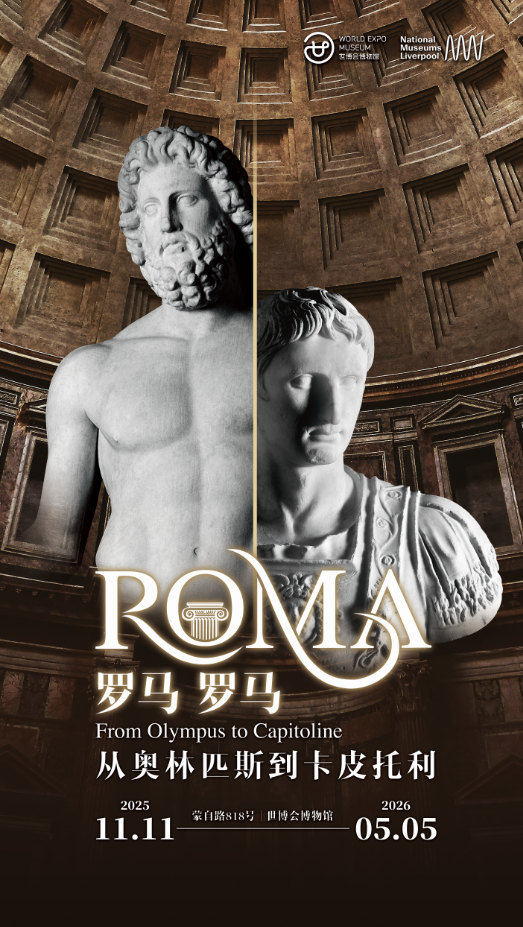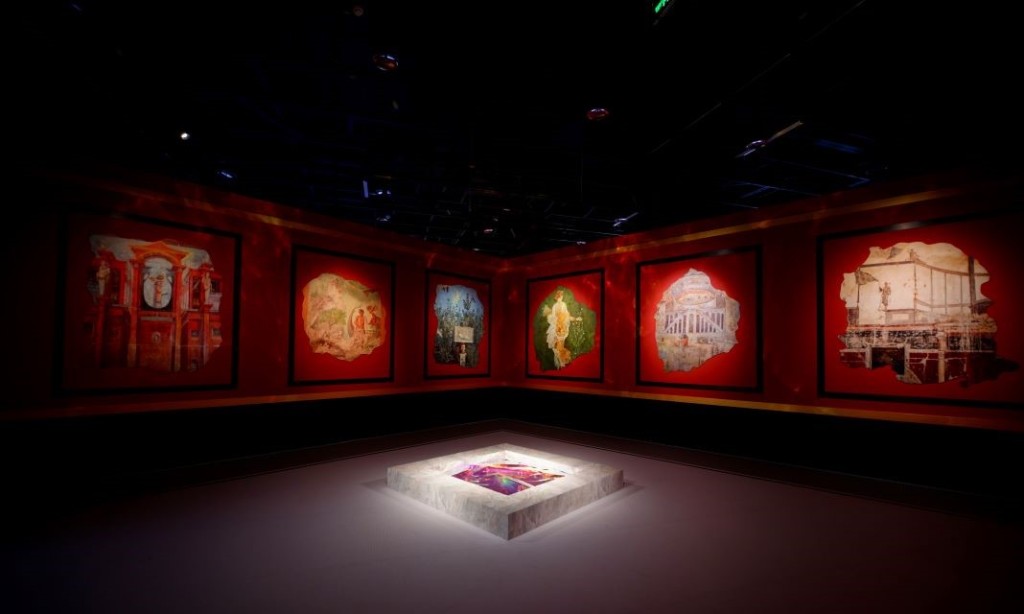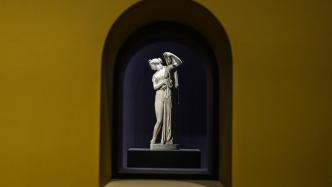
Zeus, Apollo, Poseidon, Athena... these ancient Greek and Roman gods that are familiar to the world will "descend" to Shanghai.
The Paper has learned that following the "Ancient Egypt" and "Ancient Greece" exhibitions, the "Ancient Rome" exhibition will open at the Shanghai World Expo Museum on November 11th. "Rome Rome: From Olympus to the Capitoline," a special exhibition co-created by the World Expo Museum and the National Museums Liverpool, will feature 131 precious sculptures from the museum's collection for the first time in Shanghai. The tallest of the sculptures, the god Zeus, stands at 2.27 meters, making it difficult to transport due to its extreme height. This visit to China marks its first trip outside of the country.
This exhibition focuses on the evolution of ancient Roman civilization. Through three major thematic units, namely "Legends of the Gods", "Glory of the Empire" and "Feast of Life", it presents a panoramic view of the epic journey of ancient Rome from its mythological origins to the rise and fall of the empire. Among the 131 pieces (sets) of precious collections, the vast majority are appearing in Shanghai for the first time, allowing the audience to directly witness the physical witness of the integration of civilizations.

Statue of Zeus

Exhibition site renderings
National Museums Liverpool, known as one of the largest museums in the UK, is renowned for its rich and exquisite collection of European classical sculpture. Its collection is considered the second largest of Roman sculpture in the UK, second only to the British Museum. The core of the collection for this exhibition is drawn from the sculpture collections established by the renowned 18th-century British collector Henry Blundell (1724–1810) and the 19th-century British antique dealer and collector Joseph Meyer (1803–1886). These collections formed the foundation of the World Civilisations collection at National Museums Liverpool.

Poseidon
"Legends of the Gods" features sculptures of ancient Greek and Roman deities, including a nearly 2-meter-tall statue of Zeus (Jupiter) and a bust of Poseidon (Neptune). The ancient Romans did not simply reproduce romantic narratives of Greek mythology; instead, they deeply integrated the functions of the gods with the development needs of the city-state, constructing a pragmatic "contract between man and god." This section allows viewers to understand the unique core of the ancient Roman belief system.

Bust of Hermes
"The Glory of the Empire" is centered on 26 busts of Roman emperors and nobles. Among them, the bust of Emperor Augustus and other exhibits are like "witnesses" of history, visually presenting the magnificent process of ancient Rome's rise from a city-state to a world empire, allowing the audience to feel the political foresight and cultural tolerance of the empire's rulers.

Press conference site
"The Feast of Life" restores the secular prosperity of the Romans through exhibits such as sarcophagus relief art, exquisite glass cups, mosaic murals, and gems.

Press conference site
According to Sun Yi, the Chinese curator of the exhibition and the World Expo Museum, the exhibition features an exceptionally high number of sculptures, accounting for two-thirds of the total exhibits. Another significant characteristic is the exceptional height of the sculptures. The tallest, the god-king Zeus, stands at 2.27 meters. According to the British side, this sculpture's height makes it difficult to transport, and its arrival in China marks its first time abroad. The exhibition will feature 131 sets of works spanning the ancient Greek and Roman eras, representing representative artistic styles of the era, from the Archaic period, the Augustan period, to the Hadrianic period.

Athena
This exhibition will continue the narrative logic of the World Expo Museum's recently concluded "Greeks" special exhibition. Rather than simply narrating through artifacts, it meticulously constructs a narrative thread through the deities. Visitors will follow the evolution of major deities like Jupiter (Zeus), Juno (Hera), and Minerva (Athena), as well as food utensils and decorative art. This exhibition not only demonstrates the ancient Romans' love of the mundane but also clearly outlines the historical trajectory of how ancient Roman culture shaped the foundations of modern Western society, bringing the grand narrative of civilization to life in the concrete details of everyday life.

Statue of Dionysus
The exhibition features innovative curatorial ideas. On the one hand, the "dual mountain imagery" creates a philosophical and aesthetic dialogue: Mount Olympus symbolizes the imagination and spiritual order of ancient Greek mythology, while Capitoline Hill represents the political and religious center of the ancient Roman Empire. Furthermore, the exhibition features a number of highly interactive and immersive visual scenes, including a gathering of the gods, the "Oracle of the Four Seasons" presented through light and shadow technology, the interactive exhibit "The 12 Trials of Hercules," and themed rooms dedicated to five major deities: Artemis, goddess of the hunt; Aphrodite, goddess of love; and Dionysus, god of wine. These elements are both integral to the exhibition's narrative and a compelling invitation for visitors to immerse themselves in the experience.
This exhibition is a paid exhibition, and early bird tickets for the exhibition have officially started selling since October 28.

World Expo Museum

Exhibition poster
The exhibition opens on November 11 and will run until May 5, 2026.


